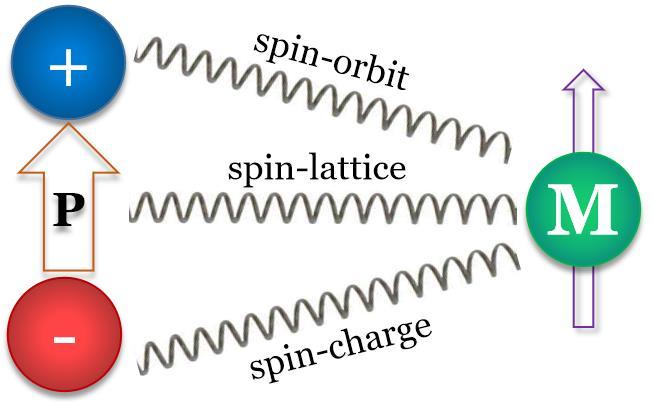
Credit: ©Science China Press
Both electric dipoles and spin moments can be ordered in solids, leading to ferro-type phases, e.g. ferromagnetism or ferroelectricity. Generally these two degrees of freedom are not simultaneously active in solids. Multiferroics, are those materials with orders of both spin moments and electric dipoles, which provide an ideal platform for these two vectors to twist together.
Even though, the coupling between magnetism and ferroelectricity is nontrivial since they obey different physical rules. From the symmetric aspect, an electric dipole breaks the spatial inversion symmetry while a spin moment breaks the time reversal symmetry. Microscopically, the existing of net magnetization requires unpaired spin, while the formation of dipole usually needs empty orbitals. Then how can they dance together?
Thanks to the extensive studies in the past decades, now scientists know how to active both degrees of freedom in solids and link them together. In a recent Topical Review by Dong, Xiang, and Dagotto, published in Natl. Sci. Rev., the authors summarize various mechanisms to coupling magnetism and ferroelectricity, which can be categorized to three paths: spin-orbit coupling, spin-lattice coupling, spin-charge coupling. These physical mechanisms have been explained with examples of typical materials.
###
This research received funding from the National Natural Science Foundation of China, Special Funds for Major State Basic Research, the Qing Nian Ba Jian Program, the U.S. Department of Energy, Office of Science, Basic Energy Sciences, Materials Science and Engineering Division.
See the article:
Shuai Dong, Hongjun Xiang and Elbio Dagotto.
Magnetoelectricity in multiferroics: a theoretical perspective
Natl Sci Rev 2018; doi: 10.1093/nsr/nwz023
https:/
The National Science Review is the first comprehensive scholarly journal released in English in China that is aimed at linking the country’s rapidly advancing community of scientists with the global frontiers of science and technology. The journal also aims to shine a worldwide spotlight on scientific research advances across China.
Media Contact
Bei Yan
[email protected]
Related Journal Article
http://dx.




